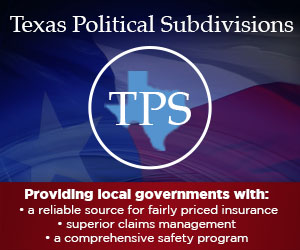Which houses in Precinct 3 back up to undeveloped woodlands?
How many elderly residents live in Precinct 2?
List the homes in Precinct 4 that represent a high fire risk.
Print a countywide map designating which locations will require evacuation of disabled residents.
When it comes to raging wildfires, the immediate answer to these questions could make a lifesaving difference. The Texas Forest Service Urban Wildlife Interface division has developed an assessment tool that can potentially answer these and other crucial questions and assist responders in planning for and responding to wildfires.
The Wildfire Hazard Risk Assessment Access Based Subdivision Survey was originally developed to allow local fire departments to determine fire risks of homes and subdivision, said Karen Kilgore, GIS specialist with the Texas Forest Service (TFS). However, the survey is available to anyone with the computer program Microsoft Access and could be easily incorporated into a county’s emergency management plan.
The in-depth assessment includes road access, fire department response capabilities, water capabilities, utilities, fuels, topography and individual home construction and is available at the Texas Interagency Coordination Center Web site, http://www.tamu.edu/ticc/UWI.htm (see survey excerpt, Page ?).
The data can be exported and integrated into a GIS format to develop maps and create a clear picture of the wildfire risks of a particular area, Kilgore said. Counties could add additional data to create assessment maps specific to their terrain and population. These maps could be used in the planning, prevention and response phases of a fire emergency.
The need for this type of planning tool was prompted by the expansion of cities and suburbia into rural areas, said Tom Spencer, fire risk assessment coordinator with the TFS.
“When you introduce people into an area, the risk goes up because man’s activities in an environment increase the likelihood of fire,” Spencer said.
The junction of homes with undeveloped areas of grass, brush and trees is known by the TFS as urban wildland interface. Should a wildland fire occur in an interface area, homes and other structures could simply be additional concentrated fuels for the wildfire to consume.
Whereas before fire could burn through and hurt nothing but grass, now it burns through “and affects people’s lives,” Spencer said.
In addition, more and more land is being designated as Conservation Reserve Program (CRP) grasslands, meaning the land is no longer grazed or plowed. That completely changes the fire picture for the rural areas, Spencer said, “as fires can burn more intensely on really extreme days because of the fuel change.”
The basics of the Wildfire Hazard Risk Assessment Access Based Subdivision Survey can be applied to any type of geographic terrain to help determine fire risk, Kilgore said.
The survey has already been used to convince one developer to restructure plans to avoid a potential fire disaster. An Austin fire department sat down with the developer and used the survey to point out fire risks of a proposed development. For example, development plans allowed for only one way in and one way out of the subdivision along the top of a canyon.
“A fire could come up both sides of the canyon and end up blocking the way in and out of the subdivision,” Kilgore said. The developers eventually created another exit path and increased the road width to help decrease fire speed.
The University of Texas at Austin learned of the survey and used it to determine the fire risk around the McDonald Observatory.
While there are many assessments available, this one has received marked praise for its user-friendly nature, Kilgore said. For more information, go to http://www.tamu.edu/ticc and click on “Urban Wildlife Interface.”
Julie Anderson, Editor







